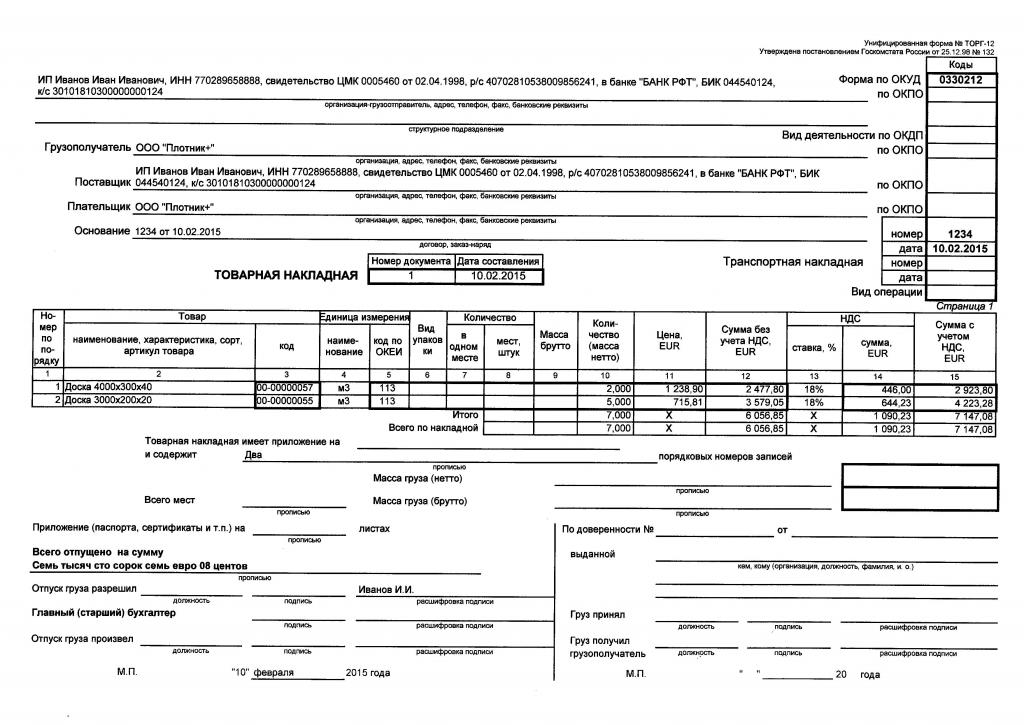In the course of its activities, the organization draws up a wide variety of documents, each of which carries its own semantic load. The correct filling, details, completeness of the indicated information are regulated by law. Small organizations in accounting and reporting are made tangible concessions from the tax service. Larger companies bear the entire tax burden. Who can sign primary documents and other types, how to properly draw up and reflect them in accounting - these and other information will be considered in this article.

Types of documents in the organization
Companies daily carry out business operations that must be immediately reflected in accounting, management and tax accounting. What are primary documents? This is just a reflection of these operations, serving also as evidence that they took place. Then, for the purposes of analysis, systematization, control, forecasting and for the implementation of other economic procedures, all transaction documents are registered in special directories and journals - accounting registers. And at the end of the reporting period, on the basis of information about all operations, reporting documentation is prepared, which is the final reflection of the company's activities for a certain period.

What is the primary document
The essence of the primary document is fixing the fact of the operation performed. The document is written out at the time of its commission or immediately after it. It reflects a number of details necessary to confirm the reality of the operation, to establish the persons involved in it, as well as its composition. The organization must comply with all requirements set forth by law and regulatory authorities with respect to the primary documentation. The requirements include the question of who can sign the primary documents. Legislation has issued enough instructions, decrees and laws. The most important legal act governing the registration of primary organizations is considered to be Art. 9 402-FZ "On Accounting".

Examples of primary documentation
Every day, the company takes certain actions: it buys goods, invoices, ships products, pays for purchases and taxes, comes and spends cash at the checkout. All these operations are documented in primary documents. To accurately reflect these actions, the following forms of documents are used:
- TORG-12 or consignment note;
- invoice
- credit and debit cash warrants;
- acts of work and services performed;
- acts of transfer of material assets;
- waybill;
- payment orders and bank statements;
- requirement for the issuance of material assets.
To this list you can add a lot of examples of the primary documentation used by the company. Its main difference from accounting registers and reporting is paperwork during the operation or with a slight delay.

Regulations
Samples of primary documents are approved by the State Statistics Committee, the Ministry of Finance and the law on accounting. Regional requirements and regulations also come out. The most important legislative act regulating the work of an accountant is 402-FZ. Art. 9 details the rules for maintaining documentation.
The legislative bodies almost quarterly issue regular amendments to existing regulations, new regulatory legal acts, and publish changes in record keeping and reporting. That is why accountants are constantly raising their qualifications, subscribing to specialized thematic publications and trying to keep abreast of all the news of tax and accounting. Failure to comply with the requirements may result in large fines, a lot of edits to existing reporting and other sanctions.

Details of documents
The legislation provides for mandatory details of primary documents, which must be indicated by the organization. Their presence determines whether the documents are taken into account in the final statements when deducting amounts from the tax base, whether the fact of a business transaction is accepted, whether the Federal Tax Service claims that the transactions are legal.
The mandatory details of the primary documents include the following information:
- Names of the supplier, buyer, consignee and payer for transportation;
- bank details, TIN, physical and legal address of companies;
- document number and date;
- nomenclature that was moved, bought or sold during the operation;
- units of measurement, quantitative and value expression of the item;
- total amount for all positions in the document;
- signatures, positions, decryption of signatures of responsible persons;
- make, car number, driver data during transportation;
- number of seats, weight and category of cargo carried;
- the basis for the execution of the document, the number and date of the contract, information on the specification, certificates, examinations, if any.

Who can sign the primary documents
Considerable attention is paid to signing documents. It is very important that those who certify the primary are authorized to perform this action. Another mandatory condition for registration regarding signatures is that all persons who are somehow involved in the process of a business transaction and are responsible persons must necessarily put their signature in the document. So who can sign the primary documents:
- CEO of the company or individual entrepreneur;
- Chief Accountant;
- the storekeeper who released the goods;
- the driver who accepted the goods for transportation;
- the storekeeper who took the goods to the warehouse;
- specialist who accepted documentation;
- third-party carrier, if he participated in the delivery process.

Power of Attorney for Signature
The right to sign primary documents can be transferred to an authorized person. This is a fairly common practice in companies where there are a large number of sales and receipts of goods, and the director is busy with other things, traveling and other activities related to the functioning of the organization. In order to entrust the signature of the primary documentation to another person, a number of rules must be observed. So, the employee who certifies the documents must be officially employed by the company with the execution of the employment contract and an entry in the work book. The company must store all the necessary data for the employee. Naturally, he must have a special education, understand the meaning and rules of paperwork. Last and most important - a power of attorney must be duly executed on it.
The power of attorney is issued for a specific employee with his passport data, place of residence, actual place of residence and position in the organization. They write it out for a certain period. If the employment contract is urgent - for the period of its validity. If the employee works without the terms of the contract, the power of attorney is issued for a year.
In the previous version, an example was considered with an operator of an accounting base or an accountant, whose duties include signing the primary organizations during the entire working time.There are situations when the power of attorney is written out to other officials - the driver, forwarding agent, engineer, mechanic. An example of such a case is pickup by the driver of the purchased goods from the territory of the supplier. To draw up documents, obtain the right to collect cargo and transport it, the organization writes out a power of attorney. It consists of two parts - the document itself and its spine. The first part remains to the supplier, the spine is taken by the company. Such a power of attorney is issued for a period of up to 10 days indicating the company in which the employee must receive goods and materials.
Electronic signature
The primary may be signed in another way - electronic. A condition is electronic document management, the availability of appropriate software and hardware, and an electronic signature certificate. It is also necessary to issue a power of attorney for the person whose name appears in the certificate. After going through all the procedures for setting up and executing electronic document management and signatures, the employee will be able to put his own signature on the basis of a power of attorney instead of the signature of the chief accountant, director and other persons provided for by the power of attorney.
